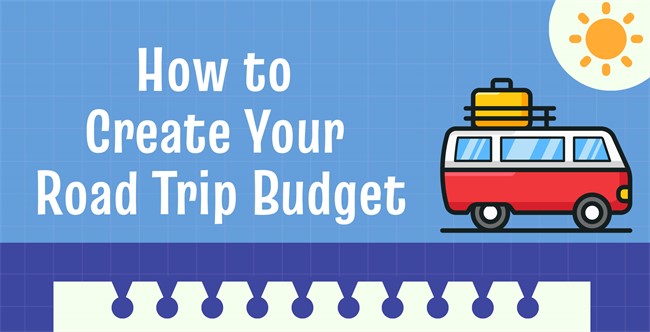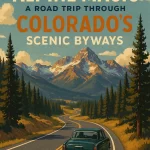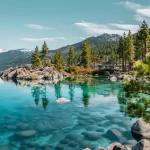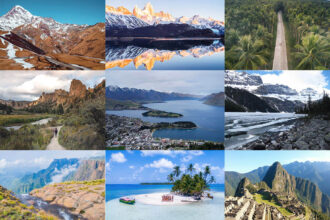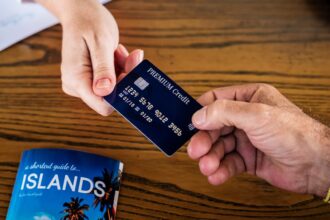Have you ever dreamed of hitting the open road, exploring the beauty of the U.S., but thought your budget would make it impossible? Well, let me tell you: not only is a road trip an affordable way to see the country, but creating a budget for it is easier than you think! With a little planning and a dash of creativity, you can make your dream trip a reality—without breaking the bank. Let’s dive into step-by-step advice to help you map out your expenses, save money, and make the most of every mile.
Step 1: Decide Your Route and Destinations
First things first, you need to know where you’re going. Are you dreaming of driving along California’s stunning Pacific Coast Highway? Exploring national parks like Yellowstone or the Grand Canyon? Or maybe you want to experience the charm of small towns in the Midwest?
Start by creating a general itinerary. It doesn’t have to be set in stone, but knowing your route helps you estimate the cost of fuel, accommodations, and activities. Use Google Maps or road trip apps like Roadtrippers to calculate the distance and plot out stops.
Pro Tip: Plan your trip during the off-season to avoid peak prices on lodging and activities. For example, visiting national parks in spring or fall can save you money and offer a quieter experience.
Step 2: Estimate Your Travel Costs
Once you have your route, it’s time to break down the main expenses. Here’s what to consider:
1. Fuel
Calculate how many miles you’ll drive and your car’s fuel efficiency. Use a fuel cost calculator to estimate gas expenses based on current prices.
Savings Hack: Apps like GasBuddy can help you find the cheapest gas stations along your route.
2. Accommodations
Decide where you’ll sleep each night. Options range from budget motels to cozy Airbnbs, campgrounds, or even free overnight parking spots (perfect for RVs or campers).
Budget-Friendly Options:
- National and state park campgrounds ($15–$30 per night)
- Discount motel chains like Motel 6 or Super 8
- Free camping spots found on apps like iOverlander
3. Food
Eating out every meal adds up quickly, so plan to mix in grocery runs and cooking. Pack a cooler with snacks, drinks, and easy-to-make meals like sandwiches or wraps.
Savings Tip: Look for accommodations with kitchen access to prepare your meals, or enjoy local farmers’ markets for fresh, affordable ingredients.
4. Activities and Attractions
Research the cost of activities like park entrance fees, tours, or special events. Many national parks charge around $20–$35 per vehicle, but investing in an America the Beautiful Pass ($80 per year) gives you unlimited access to over 2,000 federal recreation sites.
5. Miscellaneous Costs
Don’t forget expenses like tolls, parking fees, and souvenirs. Keep a small buffer in your budget for unexpected costs.
Step 3: Set a Realistic Budget
Now that you’ve identified your expenses, it’s time to create a budget. Here’s an example for a week-long road trip:
- Fuel: $200
- Accommodations: $300
- Food: $150
- Activities: $100
- Miscellaneous: $50
Total: $800
Tip: Use a budgeting app like Mint or You Need a Budget (YNAB) to track your spending during the trip.
Step 4: Save Money Before You Go
A little preparation can go a long way in stretching your travel dollars. Here are some tips to help you save:
- Plan Your Stops Wisely: Combine attractions and activities near each stop to minimize extra driving.
- Find Discounts: Check for coupons or deals on sites like Groupon or LivingSocial. Many attractions offer discounted rates for students, seniors, or military personnel.
- Join Loyalty Programs: Sign up for hotel or gas station rewards programs to earn points for future discounts.
Challenge: Try saving a set amount each week leading up to your trip. Even $25 a week for two months adds up to $200—enough to cover gas or accommodations!
Step 5: Pack Smart
Avoid overspending on items you forgot by packing everything you’ll need. Here’s a checklist of essentials:
- Car Basics: Spare tire, jack, jumper cables, and a roadside emergency kit
- Food and Cooking Gear: Cooler, reusable utensils, and a portable stove or grill
- Clothing: Pack layers to handle varying weather conditions
- Entertainment: Podcasts, audiobooks, or playlists for long drives
Bonus Tip: Bring refillable water bottles and coffee mugs to save on drinks and reduce waste.
Step 6: Cut Costs on the Road
Here are some tricks to stay within budget while still enjoying your adventure:
- Free Activities: Look for hiking trails, scenic drives, and free museum days.
- Avoid Tourist Traps: Skip overpriced attractions in favor of authentic local experiences.
- Share Costs: If traveling with friends, split costs for accommodations, gas, and food.
Step 7: Keep Track of Your Spending
While on the road, track your expenses daily to ensure you stay within your budget. Save receipts or use apps like Trail Wallet or Spendee to log spending categories.
Motivational Tip: Seeing how much you’re saving compared to other vacations can be a confidence boost to keep you on track.
Final Thoughts: Make Memories Without Breaking the Bank
A U.S. road trip doesn’t have to drain your wallet. By planning ahead, staying flexible, and embracing budget-friendly options, you can create an unforgettable adventure that’s as kind to your finances as it is to your soul.
So, where are you headed first? The rugged beauty of the Rockies? The sun-soaked beaches of Florida? Or maybe a historic journey along Route 66? Let’s dream together! Drop your #1 road trip destination for 2025 in the comments—I’d love to hear your plans!
With the open road calling your name and these tips in your pocket, it’s time to pack up, plan smart, and embark on your budget-friendly adventure. Safe travels! 🚗💨

